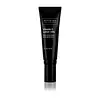What's inside
What's inside
 Key Ingredients
Key Ingredients

 Benefits
Benefits

 Concerns
Concerns

 Ingredients Side-by-side
Ingredients Side-by-side

Water
Skin ConditioningButylene Glycol
HumectantPPG-2 Myristyl Ether Propionate
EmollientSalix Alba Bark Extract
AstringentSalicylic Acid
MaskingC13-14 Isoparaffin
EmollientLaureth-7
EmulsifyingPolyacrylamide
Cetearyl Alcohol
EmollientTrisiloxane
Skin ConditioningLimnanthes Alba Seed Oil
Skin ConditioningAzelaic Acid
BufferingC10-30 Cholesterol/Lanosterol Esters
EmulsifyingCitrus Aurantium Dulcis Peel Oil
MaskingCitrus Limon Peel Oil
MaskingCymbopogon Citratus Leaf/Stem Oil
MaskingEthylene Brassylate
MaskingGlycerin
HumectantGlyceryl Stearate
EmollientLavandula Hybrida Oil
EmollientLinalool
PerfumingLinalyl Acetate
MaskingLinum Usitatissimum Seed Oil
PerfumingLitsea Cubeba Fruit Oil
MaskingOctanal
PerfumingOlea Europaea Fruit Oil
MaskingPEG-100 Stearate
Persea Gratissima Oil
Skin ConditioningPetrolatum
EmollientPhenoxyethanol
PreservativePhytosterols
Skin ConditioningPolysorbate 60
EmulsifyingSodium Hyaluronate
HumectantSodium Hydroxide
BufferingZinc Pyrithione
AntiseborrhoeicWater, Butylene Glycol, PPG-2 Myristyl Ether Propionate, Salix Alba Bark Extract, Salicylic Acid, C13-14 Isoparaffin, Laureth-7, Polyacrylamide, Cetearyl Alcohol, Trisiloxane, Limnanthes Alba Seed Oil, Azelaic Acid, C10-30 Cholesterol/Lanosterol Esters, Citrus Aurantium Dulcis Peel Oil, Citrus Limon Peel Oil, Cymbopogon Citratus Leaf/Stem Oil, Ethylene Brassylate, Glycerin, Glyceryl Stearate, Lavandula Hybrida Oil, Linalool, Linalyl Acetate, Linum Usitatissimum Seed Oil, Litsea Cubeba Fruit Oil, Octanal, Olea Europaea Fruit Oil, PEG-100 Stearate, Persea Gratissima Oil, Petrolatum, Phenoxyethanol, Phytosterols, Polysorbate 60, Sodium Hyaluronate, Sodium Hydroxide, Zinc Pyrithione
Water
Skin ConditioningTetrahexyldecyl Ascorbate
AntioxidantGlycerin
HumectantPPG-12/Smdi Copolymer
EmollientCorn Starch Modified
AbsorbentCyclopentasiloxane
EmollientTocopherol
AntioxidantUbiquinone
AntioxidantGlyceryl Caprylate
EmollientCetearyl Glucoside
EmulsifyingHydrogenated Lecithin
EmulsifyingSqualane
EmollientXanthan Gum
EmulsifyingChlorphenesin
AntimicrobialAcrylates/C10-30 Alkyl Acrylate Crosspolymer
Emulsion StabilisingPhenoxyethanol
PreservativeBenzoic Acid
MaskingSodium Polyacrylate
AbsorbentLeuconostoc/Radish Root Ferment Filtrate
AntimicrobialTriethanolamine
BufferingButylene Glycol
HumectantSorbic Acid
PreservativeTocopheryl Acetate
AntioxidantWater, Tetrahexyldecyl Ascorbate, Glycerin, PPG-12/Smdi Copolymer, Corn Starch Modified, Cyclopentasiloxane, Tocopherol, Ubiquinone, Glyceryl Caprylate, Cetearyl Glucoside, Hydrogenated Lecithin, Squalane, Xanthan Gum, Chlorphenesin, Acrylates/C10-30 Alkyl Acrylate Crosspolymer, Phenoxyethanol, Benzoic Acid, Sodium Polyacrylate, Leuconostoc/Radish Root Ferment Filtrate, Triethanolamine, Butylene Glycol, Sorbic Acid, Tocopheryl Acetate
Ingredients Explained
These ingredients are found in both products.
Ingredients higher up in an ingredient list are typically present in a larger amount.
Butylene Glycol (or BG) is used within cosmetic products for a few different reasons:
Overall, Butylene Glycol is a safe and well-rounded ingredient that works well with other ingredients.
Though this ingredient works well with most skin types, some people with sensitive skin may experience a reaction such as allergic rashes, closed comedones, or itchiness.
Learn more about Butylene GlycolGlycerin is already naturally found in your skin. It helps moisturize and protect your skin.
A study from 2016 found glycerin to be more effective as a humectant than AHAs and hyaluronic acid.
As a humectant, it helps the skin stay hydrated by pulling moisture to your skin. The low molecular weight of glycerin allows it to pull moisture into the deeper layers of your skin.
Hydrated skin improves your skin barrier; Your skin barrier helps protect against irritants and bacteria.
Glycerin has also been found to have antimicrobial and antiviral properties. Due to these properties, glycerin is often used in wound and burn treatments.
In cosmetics, glycerin is usually derived from plants such as soybean or palm. However, it can also be sourced from animals, such as tallow or animal fat.
This ingredient is organic, colorless, odorless, and non-toxic.
Glycerin is the name for this ingredient in American English. British English uses Glycerol/Glycerine.
Learn more about GlycerinPhenoxyethanol is a preservative that has germicide, antimicrobial, and aromatic properties. Studies show that phenoxyethanol can prevent microbial growth. By itself, it has a scent that is similar to that of a rose.
It's often used in formulations along with Caprylyl Glycol to preserve the shelf life of products.
Water. It's the most common cosmetic ingredient of all. You'll usually see it at the top of ingredient lists, meaning that it makes up the largest part of the product.
So why is it so popular? Water most often acts as a solvent - this means that it helps dissolve other ingredients into the formulation.
You'll also recognize water as that liquid we all need to stay alive. If you see this, drink a glass of water. Stay hydrated!
Learn more about Water